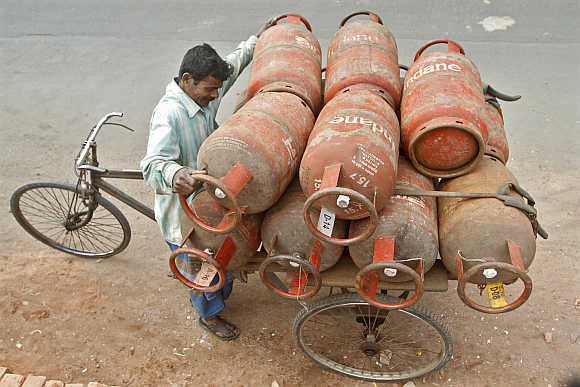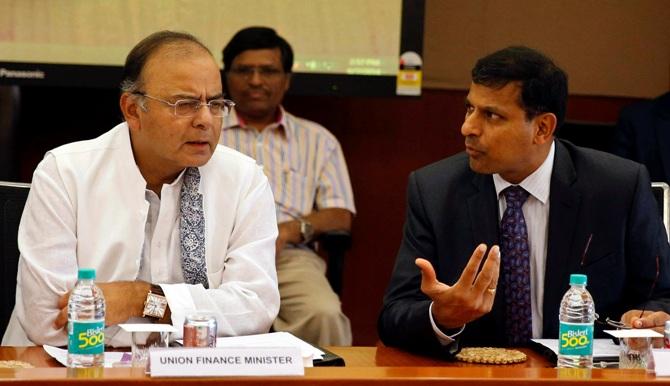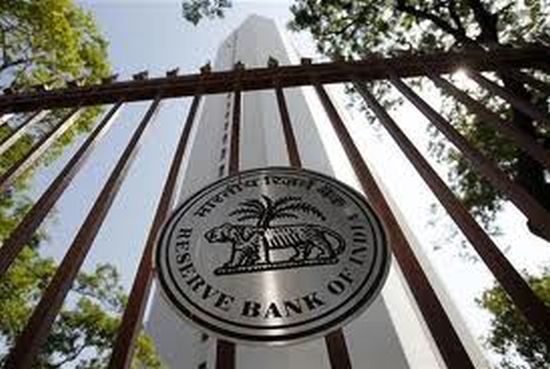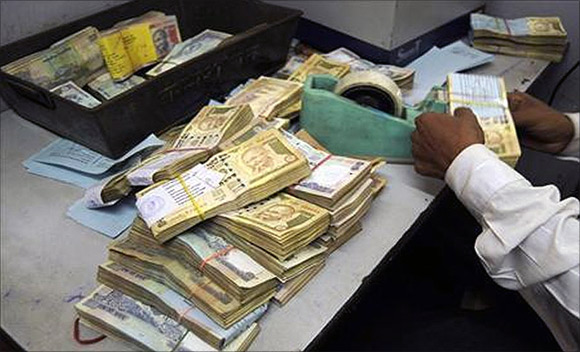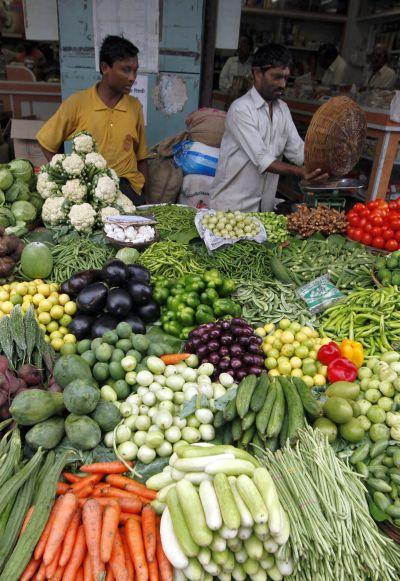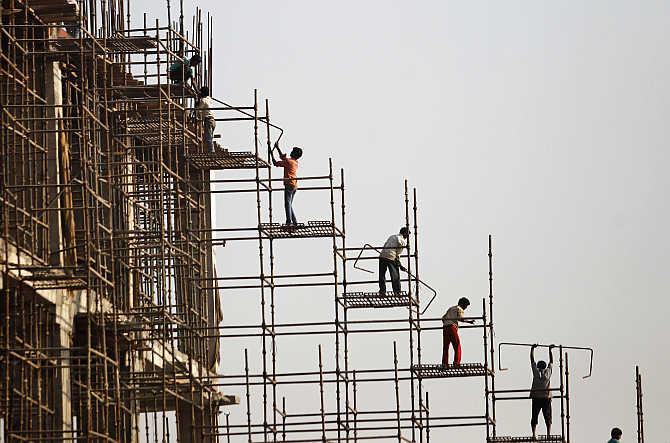 | « Back to article | Print this article |
Domestic gas to be costlier soon
The government is considering major subsidy reforms to lower wasteful expenditure and release such funds for creation of capital assets.
The plan is to gradually increase prices of cooking gas and urea, thereby bringing down the subsidy burden on the exchequer, without allowing the inflationary spiral to build up.
The carryover of subsidies has been on the rise and last year’s ‘unpaid bills’ of about Rs 1,15,000 crore (Rs 1,150 billion) that Finance Minister Arun Jaitley has inherited from the previous government are posing a huge challenge to reining in the fiscal deficit.
“We will propose some subsidy reforms to the prime minister and the net result of that will be increase in prices,” said a government official who did not wish to be named.
Click NEXT to read further. . .
Domestic gas to be costlier soon
The options include reducing the number of subsidised cylinders per household, increasing the price of subsidised liquefied petroleum gas (possibly in tranches of Rs 50) and raising urea prices at regular intervals.
The government will continue with a partial diesel decontrol and raise the fuel’s price by Rs 50 paise a litre every month.
At present, the selling price of urea is Rs 5,360 a tonne.
An increase of Rs 1,000 a tonne will lead to a saving of about Rs 3,000 crore (Rs 30 billion).
The prices of complex fertilisers have already been decontrolled.
Click NEXT to read further. . .
Domestic gas to be costlier soon
A litre of diesel in Delhi costs Rs 57.28.
Every price increase of 50 paise a litre will lower the oil marketing companies’ loss on retail sale of the fuel by more than Rs 5,000 crore (Rs 50 billion) a year.
Similarly, a 14.2-kg cylinder of subsidised LPG costs Rs 414 in Delhi, while the market price is Rs 905.
Raising the LPG price by Rs 50 a cylinder will reduce the annual underrecovery by Rs 3,800 crore (Rs 38 billion).
“The United Progressive Alliance government spent a lot on welfare schemes.
“Too much transfer of money led to inflation.
“The idea is to cut subsidies and spend on infrastructure,” said a finance ministry official.
Click NEXT to read further. . .
Domestic gas to be costlier soon
The requirement of fertiliser subsidy is likely to remain at last year’s level of around Rs 1,10,000 crore (Rs 1,100 billion) if urea prices are not increased.
However, if an increase in the price of domestic natural gas is approved, the total fertiliser subsidy will rise by another Rs 10,000 crore (Rs 100 billion).
Besides, there is a carryover of Rs 40,000 crore (Rs 400 billion) from last year.
So, the finance minister will have to provide Rs 1,60,000 crore (Rs 1,600 billion) in 2014-15 if it doesn’t roll over anything to next year.
The OMCs’ overall underrecovery for the current financial year is expected to be at least Rs 1,00,000 crore (Rs 1,000 billion) at the current global crude oil prices.
Click NEXT to read further. . .
Domestic gas to be costlier soon
The government’s subsidy burden, if it pays 60 per cent of the total underrecoveries, works out to Rs 60,000 crore (Rs 600 billion).
The government is also trying to bring down its food subsidy burden. Jaitley had told states this week, while there is a National Food Security Act, “the need of the hour is to implement the law in a cost-effective and efficient manner for ensuring real food security”.
According to interim Budget estimates, the total subsidy requirement in 2014-15 could be Rs 2,46,396 crore (Rs 2,463.96 billion), including a provision of Rs 1,15,000 crore (Rs 1,150 billion) for food subsidy.
If arrears of Rs 1,15,000 crore (Rs 1,150 billion) towards food, fertiliser and fuel subsidy are also included, the burden would be Rs 3,61,396 crore (Rs 3,613.96 billion).
Click NEXT to read further. . .
Domestic gas to be costlier soon
If subsidy reforms are not carried out, the finance ministry would have to decide between absorbing most of it this year at the cost of a high fiscal deficit or continue the practice of deferring the liability to the next financial year.
According to agency reports, Ila Patnaik, principal economic advisor in the finance ministry, had on Tuesday said, if there was a political will, one could easily bring down subsidy by one per cent of gross domestic product, without actually bringing a lot of pain to people.
A one per cent cut would mean a reduction of Rs 1,23,000 crore (Rs 1,230 billion); that is, a 50 per cent decline in the current subsidy bill.
Click NEXT to read further. . .
Domestic gas to be costlier soon
Likely scenario
Diesel
Current price: Rs 57.28 a litre (Delhi)
If raised by 50 p a litre, the cut in annual subsidy will be Rs 5,000 crore (Rs 50 billion)
LPG
Current price:
Rs 414 a 14.2-kg cylinder
If raised by Rs 50 per cylinder, the cut in annual subsidy will be Rs 3,800 crore (Rs 38 billion)
Urea
Current price: Rs 5,360 a tonne
If raised by Rs 1,000 a tonne, the cut in annual subsidy will be Rs 3,000 crore (Rs 30 billion)
Source: Govt estimates
